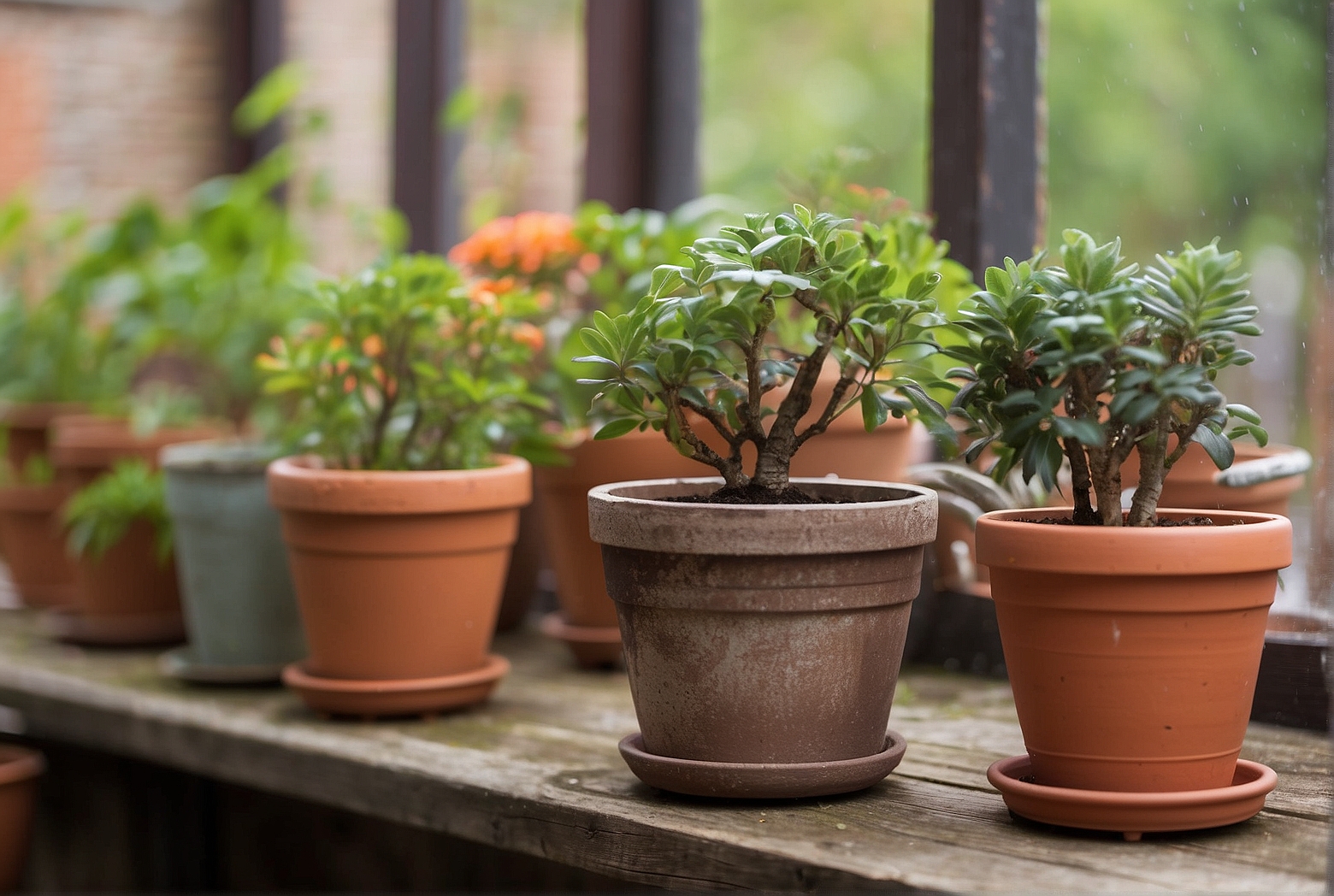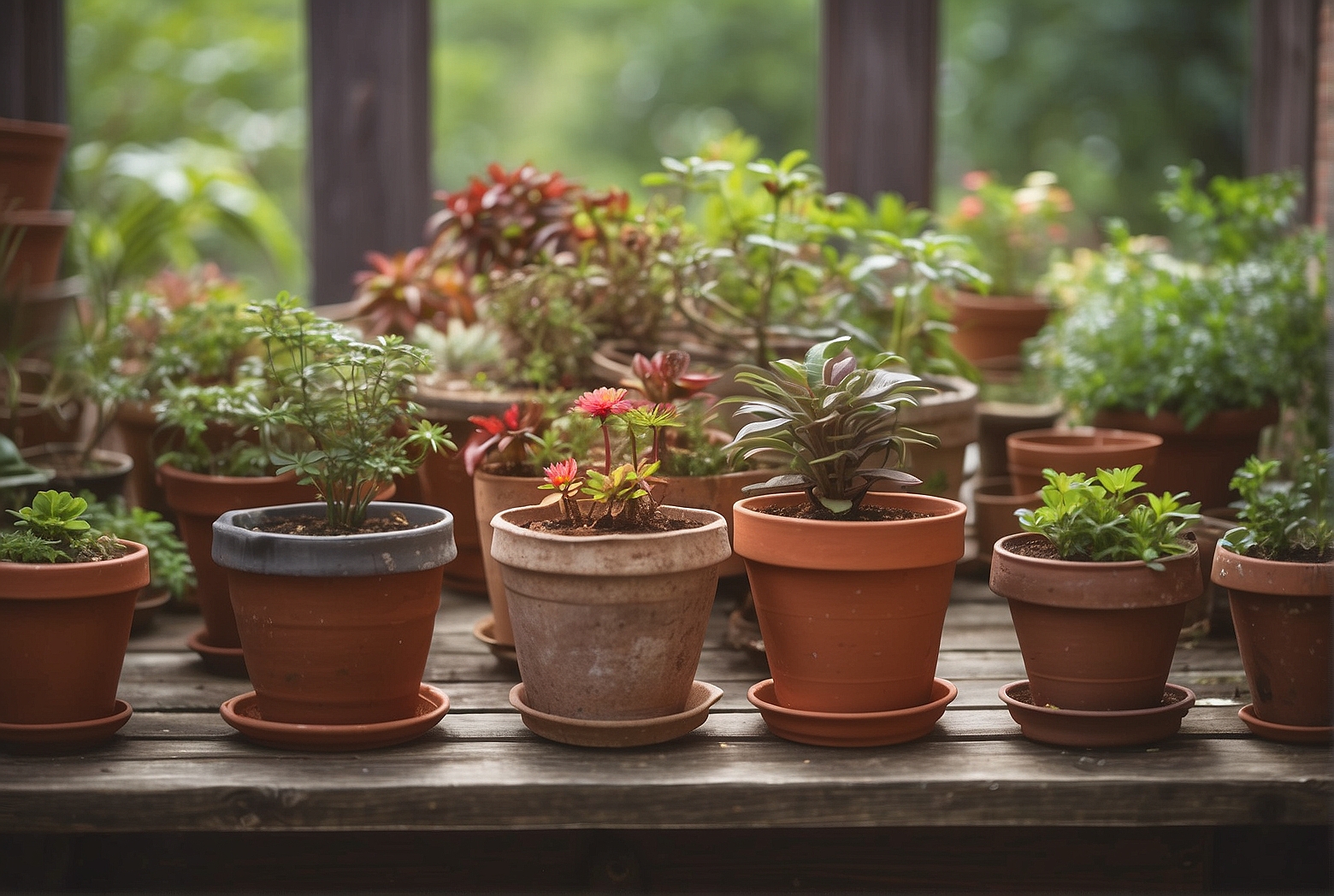Potted plants are a great way to bring life and color into your home or office. However, keeping them healthy and vibrant can be a challenge. Without proper care, potted plants can quickly dry out and become unhealthy. Fortunately, there are a few simple steps you can take to ensure your potted plants stay hydrated and healthy. In this guide, we’ll discuss how to keep potted plants from drying out, including the best watering techniques, soil types, and other tips.
How to Water Potted Plants to Keep Them From Drying Out
Watering potted plants is an important part of keeping them healthy and vibrant. Proper watering is essential to prevent plants from drying out and becoming stressed. Here are some tips to help you water your potted plants correctly.
First, check the soil of your potted plants regularly. Stick your finger into the soil up to the first knuckle. If the soil feels dry, it is time to water. If the soil feels damp, wait a few days before checking again.
When it is time to water, use lukewarm water and water the plant until the water runs out of the drainage holes in the bottom of the pot. This will ensure that the soil is evenly moistened.
Be sure to water your plants in the morning or early afternoon. This will give the plant time to absorb the water before the sun sets and the temperature drops.
If you are using a watering can, make sure to water the soil and not the leaves. This will help prevent fungal diseases from developing.
Finally, be sure to empty any excess water from the saucer or tray beneath the pot. This will prevent the roots from sitting in water, which can cause root rot.
By following these tips, you can ensure that your potted plants stay healthy and hydrated.
Tips for Choosing the Right Potting Soil to Prevent Drying Out
1. Choose a Potting Soil with Good Drainage: When selecting a potting soil, look for one that has good drainage. This will help to prevent the soil from becoming too wet and drying out.
2. Look for a Potting Soil with Organic Matter: Organic matter helps to retain moisture in the soil, which can help to prevent it from drying out. Look for a potting soil that contains organic matter such as compost, peat moss, or coco coir.
3. Consider Adding a Moisture Retaining Agent: If you are concerned about the soil drying out, consider adding a moisture retaining agent such as vermiculite or perlite. These materials help to absorb and retain moisture in the soil.
4. Avoid Potting Soils with High Salinity: High salinity in potting soils can cause the soil to dry out quickly. Look for a potting soil with a low salinity level.
5. Consider Adding a Mulch Layer: Adding a layer of mulch on top of the soil can help to retain moisture and prevent the soil from drying out.
6. Water Regularly: Finally, it is important to water your plants regularly to ensure that the soil does not dry out. Make sure to water your plants deeply and evenly to ensure that the soil is evenly moist.
The Benefits of Mulching Potted Plants to Retain Moisture
Mulching potted plants is an effective way to retain moisture and promote healthy growth. Mulch is a layer of material, such as wood chips, bark, straw, or compost, that is spread around the base of a plant. It helps to protect the soil from the elements, reduce water evaporation, and keep the soil temperature consistent.
Mulching helps to reduce water evaporation by creating a barrier between the soil and the air. This barrier helps to keep the soil moist and prevents it from drying out. Additionally, mulch helps to keep the soil temperature consistent by providing insulation. This helps to prevent the soil from becoming too hot or too cold, which can be damaging to the plant’s roots.
Mulching also helps to protect the soil from the elements. It prevents the soil from being washed away by heavy rains and helps to keep weeds from taking over the area. Additionally, mulch helps to improve the soil’s structure by adding organic matter. This helps to improve the soil’s ability to retain moisture and nutrients, which is beneficial for the plant’s growth.
Overall, mulching potted plants is an effective way to retain moisture and promote healthy growth. It helps to reduce water evaporation, keep the soil temperature consistent, and protect the soil from the elements. Additionally, it helps to improve the soil’s structure and add organic matter. For these reasons, mulching is an important part of caring for potted plants.

Q&A
1. What is the best way to water potted plants?
The best way to water potted plants is to water them deeply and thoroughly, allowing the water to penetrate the soil and reach the roots. Water until the soil is saturated and water begins to run out of the drainage holes. Allow the soil to dry out slightly between waterings.
2. How often should potted plants be watered?
The frequency of watering will depend on the type of plant, the size of the pot, and the temperature and humidity of the environment. Generally, potted plants should be watered when the top inch of soil is dry.
3. What other methods can be used to keep potted plants from drying out?
In addition to regular watering, other methods to keep potted plants from drying out include using a moisture meter to check the soil moisture level, adding a layer of mulch to the soil surface, and grouping plants together to create a humid microclimate.
Conclusion
Keeping potted plants from drying out is an important part of successful gardening. By following the tips outlined in this article, you can ensure that your potted plants stay healthy and hydrated. Watering your plants regularly, using the right soil, and providing adequate drainage are all essential steps to keeping your plants from drying out. Additionally, using mulch and fertilizers can help to keep your plants healthy and hydrated. With a little bit of effort, you can keep your potted plants from drying out and enjoy a beautiful garden.

